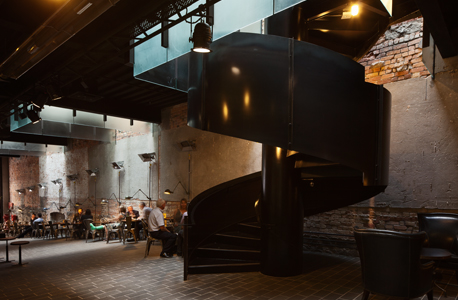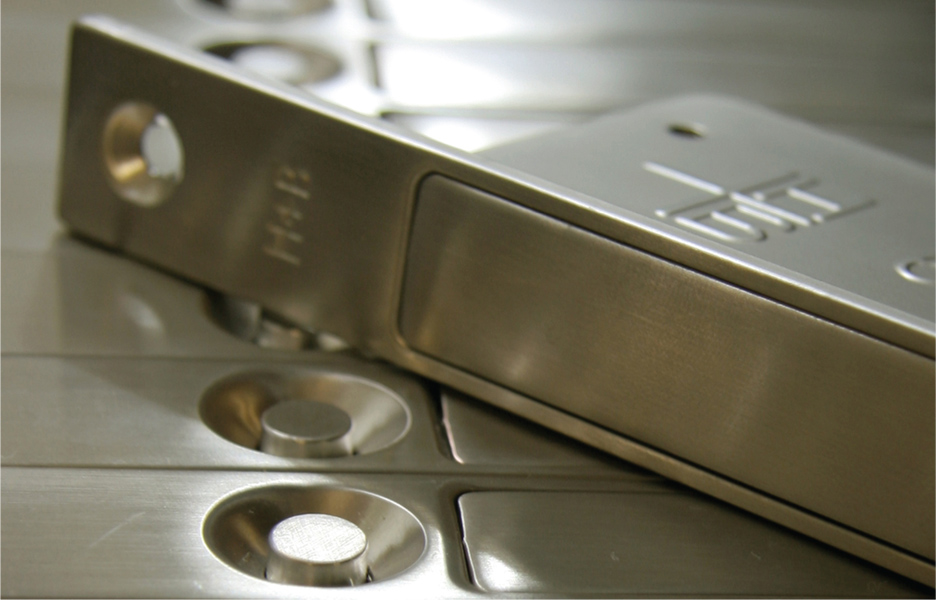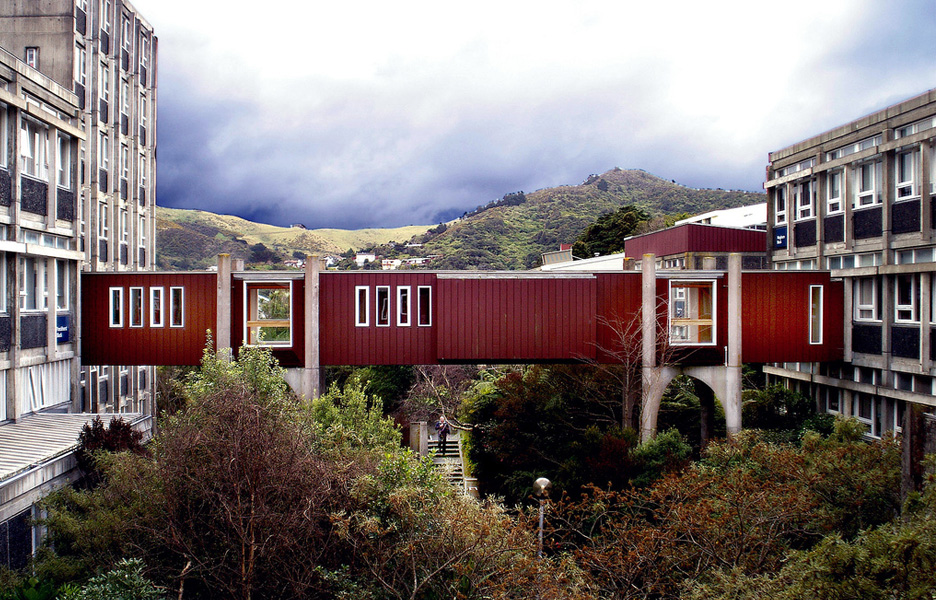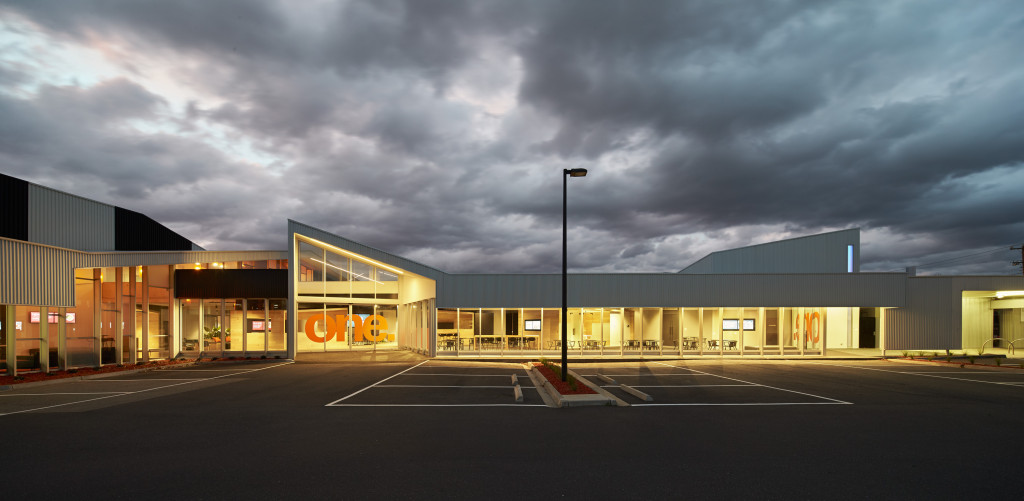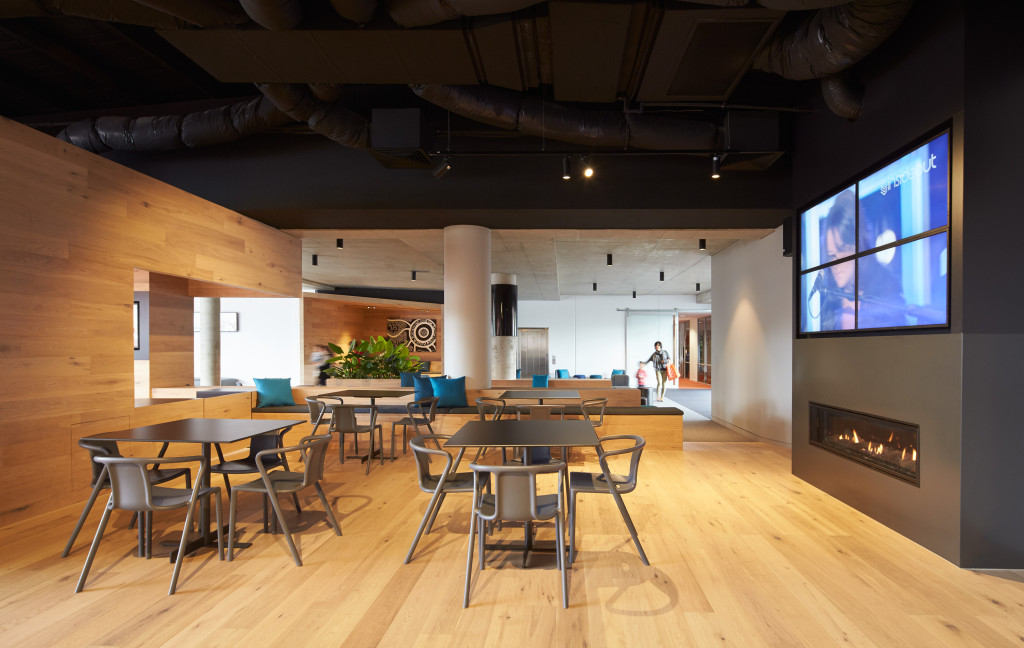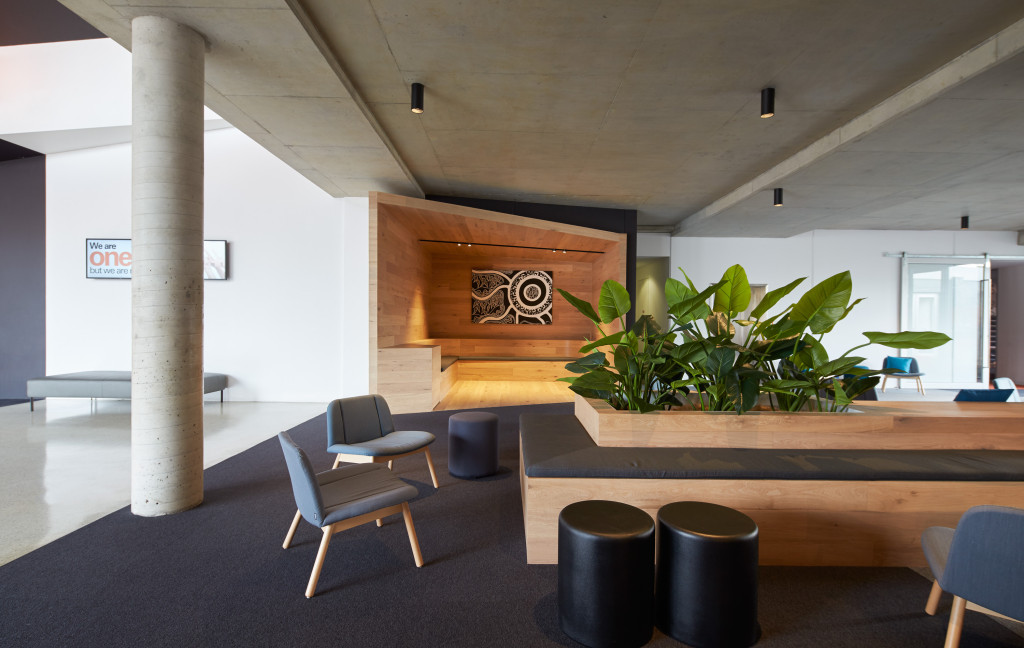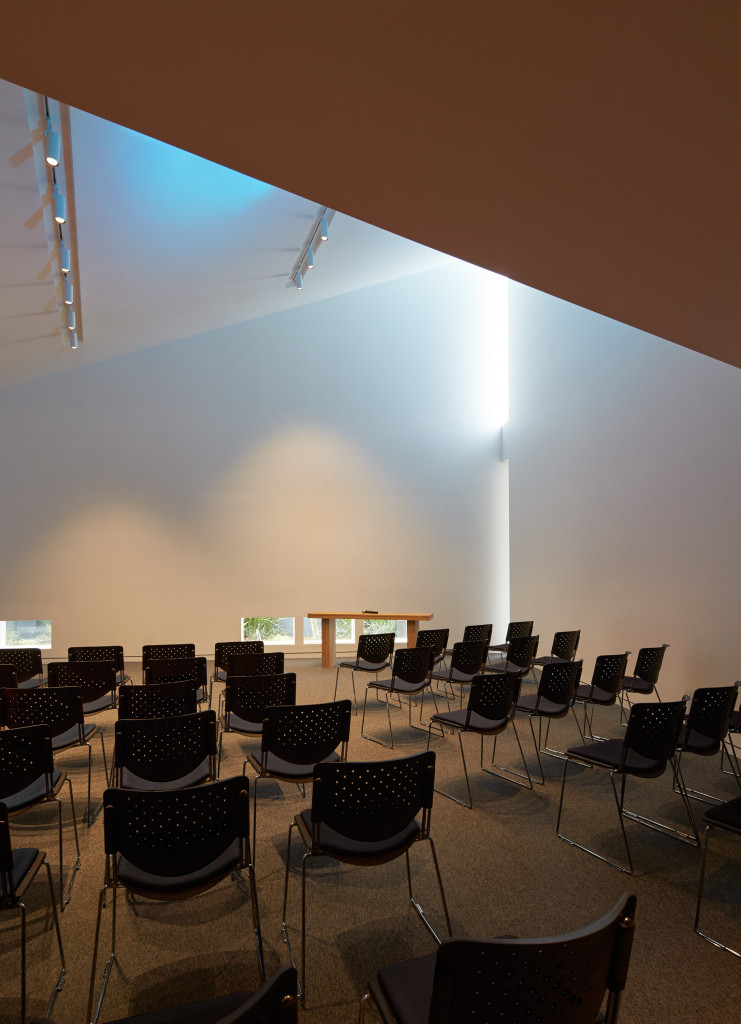
The future of churches with DKO
Share
Above: One Community Church, Blackburn, by DKO, image courtesy DKO. Written by Sara Kirby.
Over the past 100 years, the number of non-religious Australians has increased substantially and continually, from one in 250 people to one in five, according to the ABS. So what does this declining following mean for churches?
The church as an architectural entity has remained reasonably stagnant for quite some time. Grey or bluestone buildings set back from the street, a high cathedral roof, the crucifix or other symbology at a place of importance. An interior dominated by the nave (worship space), which is populated by pews and more religious iconography. An interior that is often interpreted as cold, and exclusive to those who worship the appropriate faith.
“The contemporary church is getting much more sophisticated in marketing their image,” said Koos de Keijzer, director of architectural firm, DKO. DKO has been designing, and coming to specialise in, contemporary churches for about nine years. “All of our really successful church projects, the client has been really enlightened in how they want to present their “retail play” or church offering, I guess is the way to phrase it.”
Churches designed by DKO are a far cry from that stereotypical, traditional stone structure. Nine years ago, the team was recruited to add an extension – including an auditorium, office facilities, and a coffee shop – to the Victory Church in Auckland, NZ. The aim of the add-on was to engage and attract a younger demographic, a new wave of followers. “[Because of the brief,] the architectural style and language was driven around trying to connect a younger audience. It was so successful that about a year and a half ago they came back to us and wanted to do another extension because the congregation had grown, and the community had engaged at a much higher level than they expected,” said Jesse Linardi, DKO’s design director.
So it would appear that the reimagining of traditional church design may help recover some of religion’s declining followers, but how to bring it forward after it has been stagnant for so long? DKO’s second project, One Community Church in Blackburn, has taken the traditional design and basically thrown it straight in the bin, beginning afresh. The building looks more like a community centre, with walls of warm timber, carpet, a café, a fireplace…and no religious iconography to be seen. “The thing about One Church is that the client was a clever church retailer,” said de Keijzer. “They understood that their market is young kids, so they wanted no religious iconography – no crosses, crucifixes, any of that kind of stuff. They wanted it to be a contemporary space where kids would feel comfortable.”
“There are subtle references in there, though,” Linardi adds. “The sign at the street – it actually is a cross, but we’ve turned it on it’s side. If you look at brickwork on the café at the front, there are little crosses in the patterning of the brick, and also the window in the major foyer almost references that stained glass, historical look. So there are references that aren’t obvious, but are still there, as a nod to the history.”
Iconography aside, DKO are working to help reinvigorate the church as a whole, re-presenting it as an inclusive, community-centred space. Rather than a building you enter, attend a service within, and immediately leave, the team are designing spaces that allow people to build relationships in, and spend time in. Less focus is being put on the actual worship space, and more on what else can be offered to the community, the team say. “We are interested in what happens before people go into the church building, after they come out, and the breaking down of the idea of “what is church?” A lot of what church is, is people communicating with each other. So, as architects, we are working on including out of site plaza type places with a coffee cart, where after the formal church service, the people can sit down there, enjoy some sun and start to talk,” de Keijzer said.
Looking at the interior of One Church, it doesn’t strike me as a church space, and I see now that that’s the idea. The reimagining of these spaces puts worship in the back seat, and community bonding in the front. It’s a comfortable and warm space where children, families, and older generations alike can sit and spend time with a coffee or a book. Its a space where counselling sessions can happen, meetings, or talks. Of course, however, there is room for the traditional church service too.
“With our designs for new churches, one third of the space is dedicated to kids and young people, one third is allocated to the office space and foyer, and one third is for the actual hall itself. So the actual church hall is usually less than a third of the church offering,” said de Keijzer. Linardi concurs, “The traditional church usually has a really small foyer and a really big religious space. If you look at One Church, it’s almost the opposite. Even though there is a big hall, the amount of social space in between it is the most important aspect of the building,” he said.
With these churches finished and a handful of others still in the works, DKO is confident in its approach, and despite the rigid history of church design, clients are beginning to put their trust in the studio’s capable hands. “In the architectural world, you get different typologies that you become almost experts at. Because we’ve done quite a few churches, we find that our clients are now actually looking for us to help them with ways of moving forward.” Linardi said. “They are now looking for us to use our experience and wanting us to help them move their brand, or their congregation, forward.”
You Might also Like
